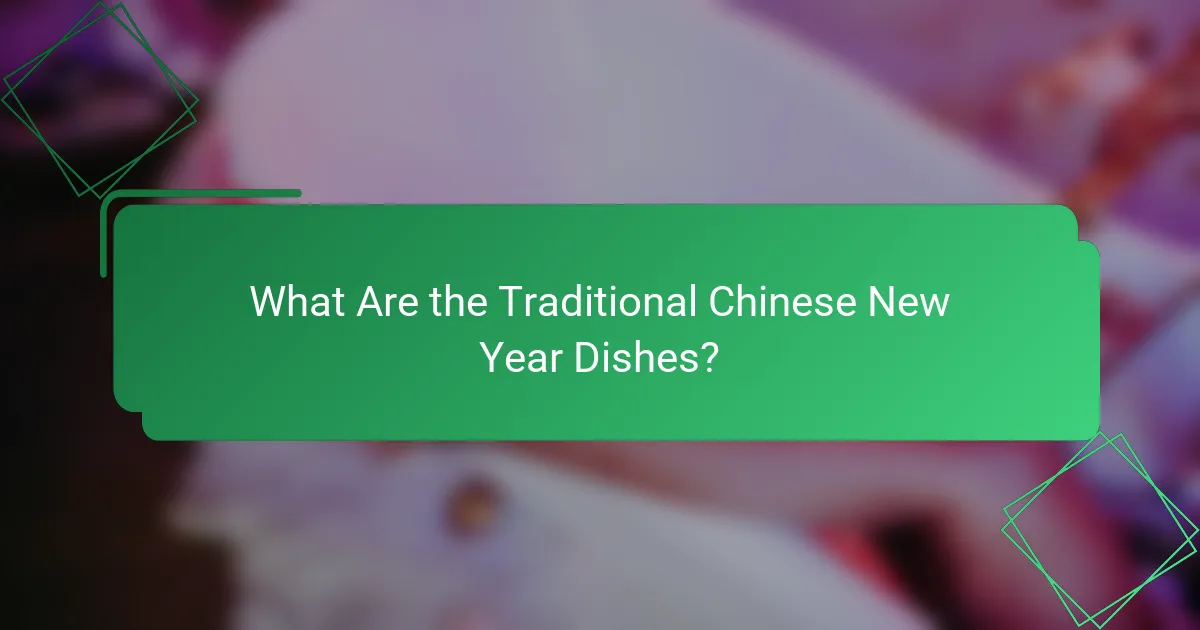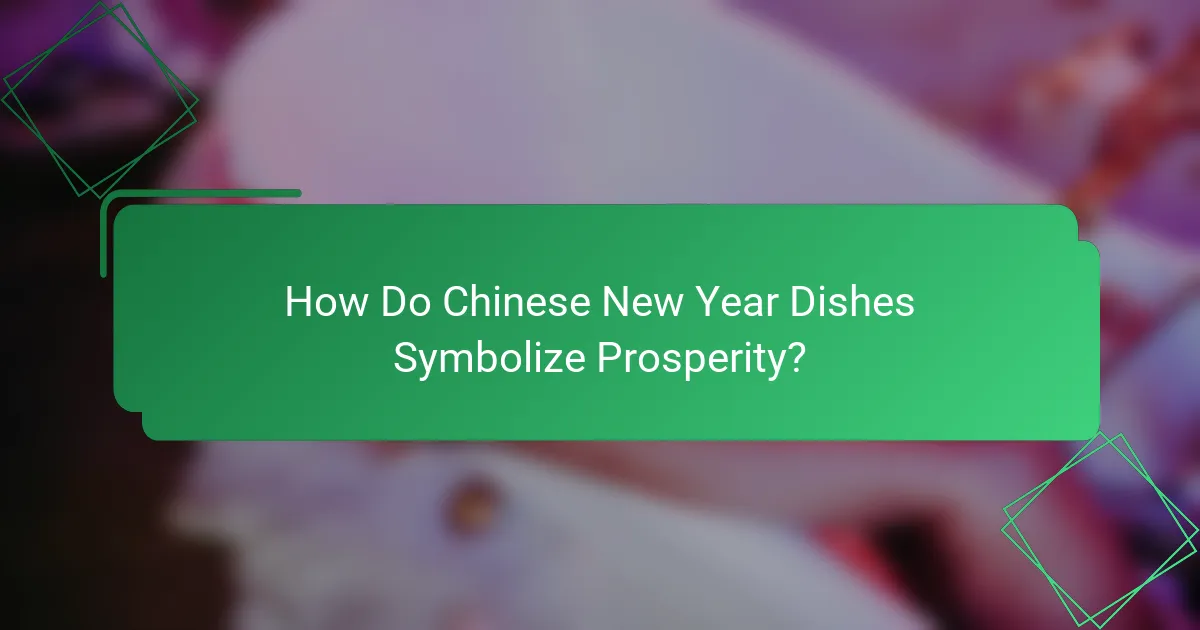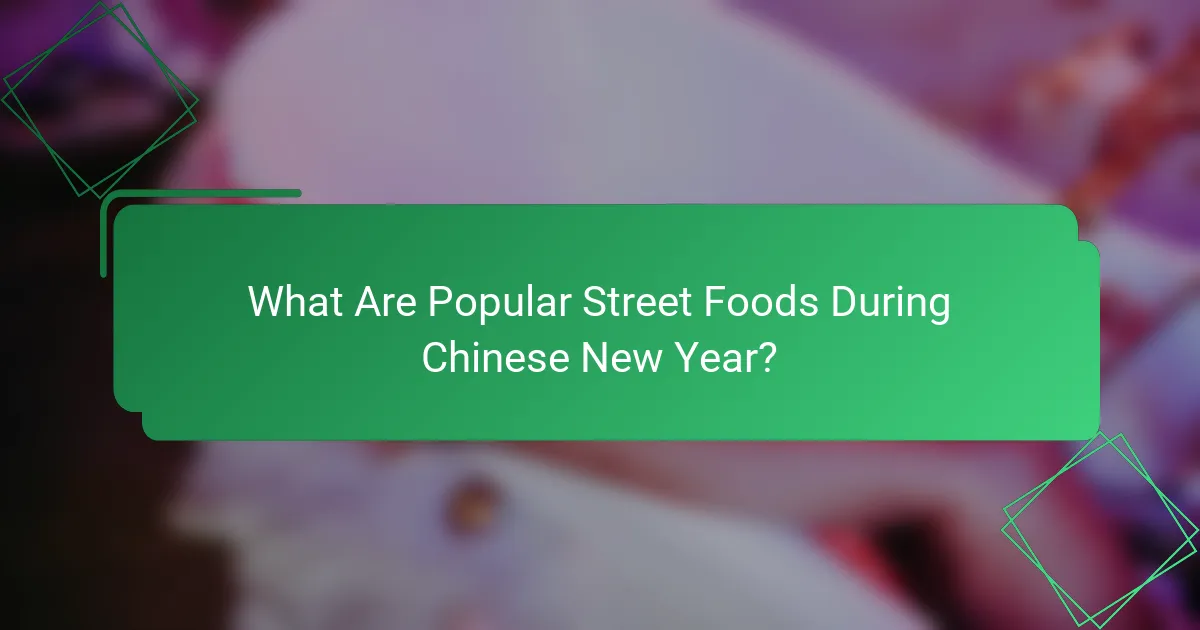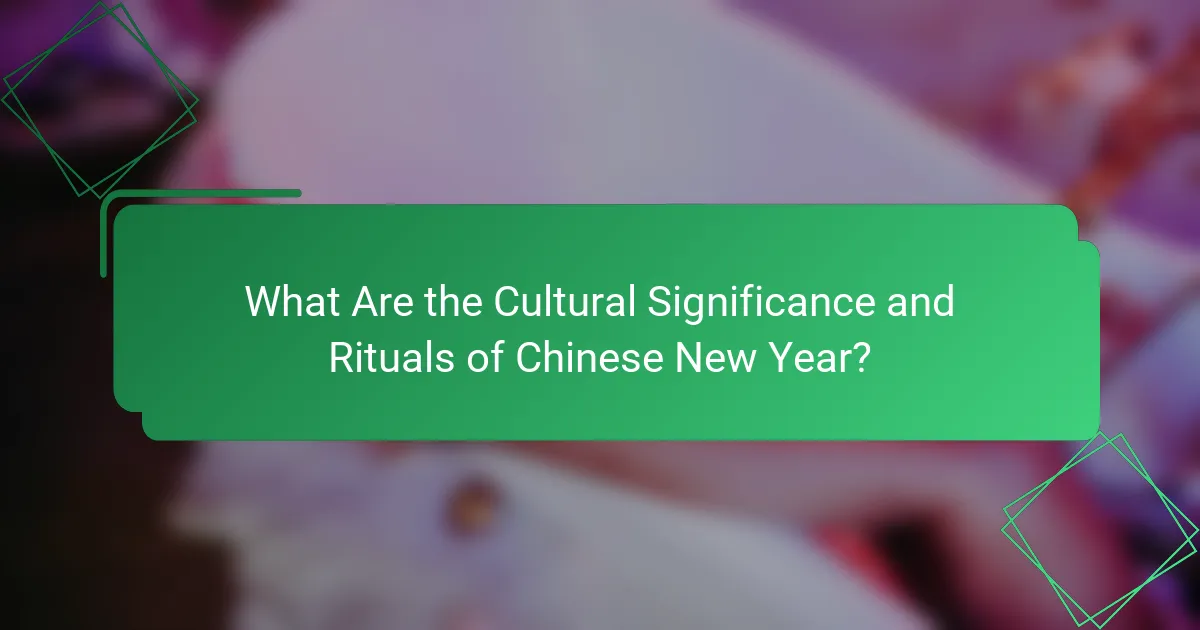Embark on a culinary journey through the vibrant world of Chinese New Year street food, where each dish is steeped in rich symbolism and cultural significance. From dumplings representing wealth to sticky rice cakes symbolizing togetherness, these festive foods not only tantalize the taste buds but also embody wishes for prosperity and happiness in the coming year. Join us as we explore the flavors and traditions that make this celebration truly special.

What Are the Traditional Chinese New Year Dishes?
Traditional Chinese New Year dishes are rich in symbolism and flavor, often representing prosperity, happiness, and good fortune. These festive foods are typically enjoyed during family gatherings and celebrations, each with its own cultural significance.
Dumplings
Dumplings are a staple during Chinese New Year, symbolizing wealth and prosperity. Their shape resembles ancient Chinese gold ingots, making them a popular choice for families hoping for financial success in the coming year.
Typically filled with minced meat and vegetables, dumplings can be boiled, steamed, or pan-fried. It’s common to prepare a large batch, allowing family members to gather and make them together, fostering a sense of unity.
Nian Gao
Nian Gao, or sticky rice cake, is another essential dish, representing growth and progress. The word “nian” sounds like the word for “year,” while “gao” sounds like “tall” or “high,” symbolizing the wish for growth in the new year.
This dish is often made with glutinous rice flour and can be served sweet or savory. It can be steamed, sliced, and stir-fried with ingredients like vegetables or meat, making it a versatile addition to the festive table.
Spring Rolls
Spring rolls are enjoyed for their resemblance to gold bars, symbolizing wealth and prosperity. These crispy treats are filled with a variety of ingredients, including vegetables, meat, or seafood, and are often served with dipping sauces.
When preparing spring rolls, it’s essential to ensure the filling is well-seasoned and the wrappers are crisp. They can be deep-fried or baked, with the latter being a healthier option that still delivers great flavor.
Fish
Fish is a must-have during Chinese New Year, as it symbolizes abundance and surplus. The Chinese word for fish, “yu,” sounds like the word for “surplus,” making it a dish that represents the hope for a prosperous year ahead.
Typically served whole, fish is often steamed with ginger and scallions to enhance its natural flavors. It’s important to leave some fish uneaten to signify that there will be leftovers and abundance throughout the year.
Sweet Rice Balls
Sweet rice balls, or tangyuan, are traditionally eaten during Chinese New Year to symbolize family unity and togetherness. Their round shape represents completeness and harmony within the family.
These glutinous rice balls can be filled with sweet pastes like sesame or red bean and are often served in a warm syrup. Preparing and enjoying tangyuan together is a cherished family tradition that highlights the importance of togetherness during the festive season.

How Do Chinese New Year Dishes Symbolize Prosperity?
Chinese New Year dishes are rich in symbolism, often representing wealth, abundance, and good fortune. Each dish is carefully chosen to convey wishes for prosperity in the coming year, making them an essential part of the festive celebrations.
Meaning of Dumplings
Dumplings, or jiaozi, are shaped like ancient Chinese gold or silver ingots, symbolizing wealth. Eating dumplings during the New Year is believed to bring financial prosperity and good luck for the year ahead.
Families often make dumplings together, which fosters unity and strengthens bonds. Some even hide a coin inside a dumpling; the person who finds it is said to have extra luck in the coming year.
Significance of Fish
Fish, pronounced as “yu” in Mandarin, sounds like the word for surplus or abundance. Serving fish during Chinese New Year signifies a wish for a year filled with wealth and surplus.
Traditionally, the fish is served whole to symbolize completeness and unity. It is important to leave some fish uneaten to ensure that the surplus carries over into the next year.
Importance of Nian Gao
Nian gao, or glutinous rice cake, is a staple during Chinese New Year, symbolizing growth and progress. The word “nian” sounds like “year,” while “gao” sounds like “tall” or “high,” suggesting that one will achieve new heights in the coming year.
This dish is often prepared with various fillings and can be steamed or fried. Its sticky texture represents the idea of sticking together as a family and achieving success together.

What Are Popular Street Foods During Chinese New Year?
During Chinese New Year, popular street foods reflect the festive spirit and cultural significance of the holiday. These dishes are often enjoyed for their symbolism of prosperity, luck, and togetherness, making them essential to the celebrations.
Jianbing
Jianbing is a beloved Chinese street food, often enjoyed as a breakfast item during the New Year festivities. This savory crepe is made from a batter of wheat and mung bean flour, cooked on a hot griddle, and filled with ingredients like eggs, scallions, and crispy wonton crackers.
To enhance its flavor, jianbing is typically topped with a variety of sauces, such as hoisin and chili paste. When purchasing jianbing, look for vendors who prepare them fresh on-site to ensure the best taste and texture.
Chuanr (Grilled Skewers)
Chuanr, or grilled skewers, are a popular street food choice during Chinese New Year, especially in northern regions. These skewers can be made from various meats, including lamb, chicken, and beef, marinated with spices and grilled over open flames.
When enjoying chuanr, consider trying different marinades and spice levels to find your preferred flavor. Vendors often offer a range of dipping sauces, enhancing the overall experience. Be mindful of food safety; ensure that the skewers are cooked thoroughly before consuming.
Stinky Tofu
Stinky tofu is a unique street food that is particularly popular during festive occasions, including Chinese New Year. Despite its strong odor, many people find its flavor delightful, especially when deep-fried and served with a spicy sauce or pickled vegetables.
When trying stinky tofu, it’s best to purchase it from reputable vendors known for their quality. The dish is often accompanied by a side of chili sauce, which can help balance the strong flavor. If you’re new to this delicacy, approach it with an open mind and enjoy the cultural experience it offers.

How Do Different Regions Celebrate Chinese New Year?
Chinese New Year celebrations vary significantly across regions, each showcasing unique customs, dishes, and cultural practices. These regional festivities reflect local traditions and the diverse heritage of the Chinese people.
Beijing Celebrations
In Beijing, the Chinese New Year is marked by vibrant parades and traditional performances, including lion dances and fireworks. Families often gather to enjoy a reunion dinner featuring dishes like dumplings and fish, symbolizing prosperity and abundance.
During the festivities, locals also visit temples to pray for good fortune in the coming year. Street vendors sell festive snacks, such as candied fruits and rice cakes, adding to the celebratory atmosphere.
Shanghai Festivities
Shanghai’s celebrations are characterized by a blend of modern and traditional elements, with elaborate light displays and cultural shows. The city is famous for its New Year’s Eve fireworks, which draw large crowds along the Bund.
Food plays a central role in Shanghai’s festivities, with families enjoying dishes like spring rolls and sweet rice balls. These foods symbolize wealth and unity, and many locals also exchange red envelopes filled with money as a gesture of good luck.
Guangzhou Traditions
Guangzhou celebrates Chinese New Year with a strong emphasis on family reunions and traditional Cantonese cuisine. The city is known for its elaborate banquets featuring dishes like roasted meats and seafood, which are believed to bring good fortune.
In addition to feasting, locals participate in lion dances and visit flower markets, which are popular during this time. The vibrant atmosphere is enhanced by the exchange of gifts and the decoration of homes with red lanterns and couplets, symbolizing happiness and prosperity.

What Are the Cultural Significance and Rituals of Chinese New Year?
Chinese New Year, also known as Lunar New Year, holds deep cultural significance as it marks the beginning of the lunar calendar. The festival is celebrated with various rituals that symbolize renewal, family unity, and the warding off of bad luck.
Key Rituals During Chinese New Year
Key rituals during Chinese New Year include family reunions, cleaning the home, and offering sacrifices to ancestors. Families gather for a reunion dinner on New Year’s Eve, which is considered the most important meal of the year. Cleaning the house before the New Year symbolizes the removal of bad luck and the welcoming of good fortune.
Traditional Foods and Their Meanings
Traditional foods play a crucial role in the celebrations, each carrying symbolic meanings. For instance, dumplings represent wealth, while fish signifies surplus and prosperity. Noodles, often served uncut, symbolize longevity, and sweet rice balls are associated with family unity.
Festive Decorations and Their Significance
Decorations during Chinese New Year are vibrant and meaningful, often featuring red and gold colors to symbolize good luck and wealth. Common decorations include lanterns, couplets, and paper cuttings that convey wishes for happiness and prosperity. Homes are adorned with these items to invite positive energy for the coming year.
Customs to Avoid During the Celebration
During Chinese New Year, certain customs are avoided to prevent bad luck. For example, sweeping the floor is discouraged on New Year’s Day as it may sweep away good fortune. Additionally, using sharp objects like scissors is believed to cut off good luck, and arguing or discussing death is considered inauspicious.
